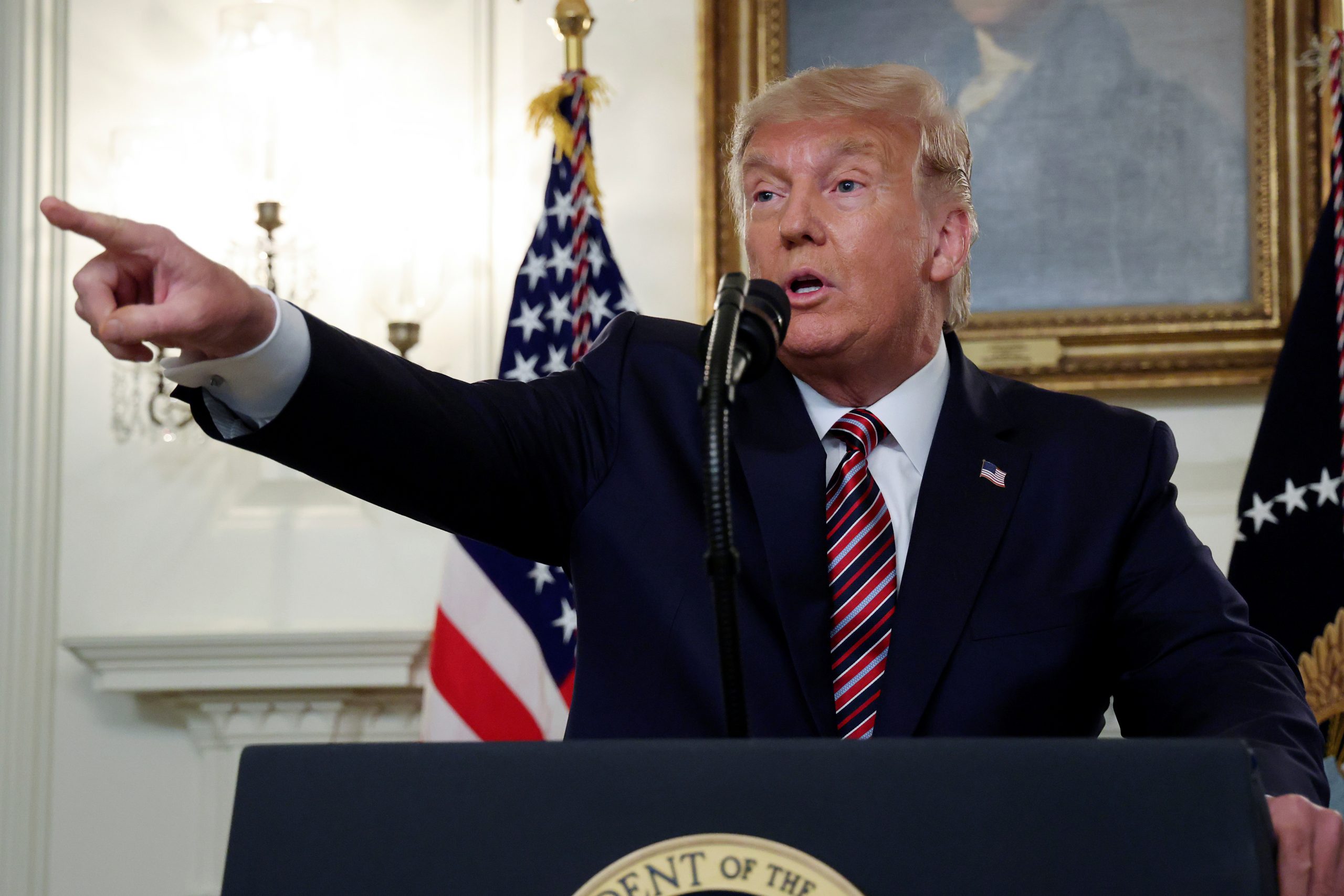President Donald Trump on Wednesday unveiled a list of potential nominees including three sitting U.S. senators to fill any future Supreme Court vacancies in a move aimed at bolstering support among conservative voters ahead of the Nov. 3 election.
At a White House event, Trump announced a list of 20 potential justices, saying they all would preserve America’s “founding principles.” The Republican president also urged his Democratic election rival, Joe Biden, to release his own list.
Trump’s list included Republican Senators Ted Cruz of Texas, Josh Hawley of Missouri and Tom Cotton of Arkansas.
Biden is leading Trump in opinion polls in pivotal election battleground states.
The Supreme Court’s 5-4 conservative majority includes two justices appointed by Trump. His release of a new Supreme Court list – names added to another roster he had issued earlier in his presidency – was aimed at reassuring conservatives and generating enthusiasm among them ahead of the election. It brought to 44 the number of different potential nominees Trump has said he would consider.
Trump and his allies have frequently criticized conservative Chief Justice John Roberts, who has ruled against the president in several high-profile cases. An additional vacancy that Trump could fill would tilt the balance of the court further to the right.
Four of the nine justices are 70 or older: liberals Ruth Bader Ginsburg (87) and Stephen Breyer (82) and conservatives Clarence Thomas (72) and Samuel Alito (70). Supreme Court justices, who receive lifetime appointments, play an enormous role in shaping U.S. policies on hot-button issues such as abortion, LGBT rights, gun rights, religious liberty, the death penalty and presidential powers.
If Ginsburg, who has had recurring health problems, or Breyer were to step down and Trump was able to appoint a successor the court would have a rock-solid 6-3 majority – or even a 7-2 advantage if both liberals were replaced.
That could deliver changes long sought by conservatives and Republicans such as overturning the court’s landmark 1973 ruling that legalized abortion nationwide. The court would also be a conservative bulwark should liberal Democrats in the future have the votes to pass sweeping legislation on such issues as climate change and healthcare.
Trump’s ability to appoint justices is reliant not just on him winning re-election but also on Republicans retaining control of the U.S. Senate, which has the job of confirming federal judicial nominations. Under Majority Leader Mitch McConnell, Senate confirmation of Trump nominees to the federal judiciary has been a paramount priority.
As a candidate in 2016, Trump also unveiled a list of potential nominees in bid to win over skeptical conservatives.
In the most recent Supreme Court term, Roberts sided with the court’s liberals in three high-profile cases in which the majority backed LGBT worker rights, thwarted Trump’s bid to rescind protections for illegal immigrants dubbed “Dreamers” who entered the United States as children and struck down a restrictive Louisiana abortion law.
Trump’s two appointees to the court were Neil Gorsuch in 2017 and Brett Kavanaugh in 2018.
(Reporting by Andrea Shalal, Lisa Lambert and Lawrence Hurley; Writing by Steve Holland; Editing by Jonathan Oatis and Will Dunham)

























 Continue with Google
Continue with Google